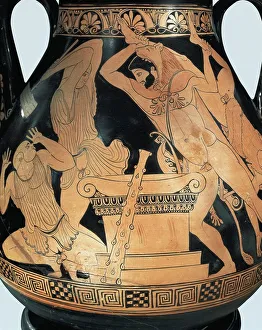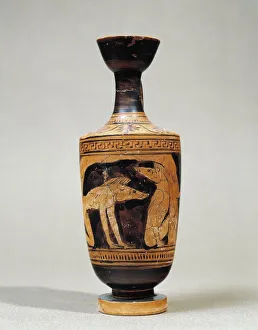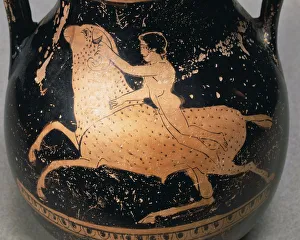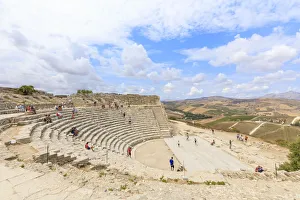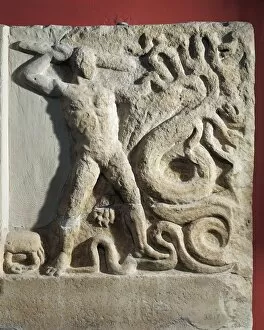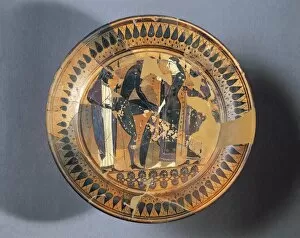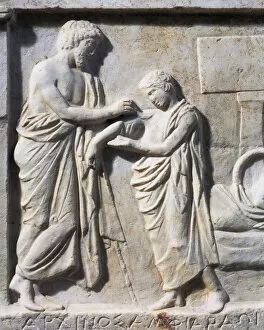Greek Civilisation Collection
"Exploring the Richness of Greek Civilization through Pottery
All Professionally Made to Order for Quick Shipping
"Exploring the Richness of Greek Civilization through Pottery and Art" Delve into the captivating world of ancient Greece with these remarkable pottery pieces that offer glimpses into their vibrant civilization. The Attic pelike by Pan Painter portrays the heroic Heracles slaying King Busiris and Egyptian priests, showcasing Greek mythology's influence on their artistry. Another fascinating red-figure pottery, the Attic lekythos, depicts Ulysses' companions transformed into swine by Circewitch. This artwork highlights the Greeks' fascination with mythical tales and their skill in capturing dramatic moments. Intriguingly, an Attic pelike showcases Phrixus being saved by a flying ram adorned with a golden sheep fleece. This piece exemplifies both artistic prowess and mythological storytelling that were integral to Greek culture. Moving onto black-figure pottery, an oenochoe presents Hermes, messenger of gods, flanked by two sphinxes. It reflects the Greeks' belief in divine intervention and their reverence for deities like Hermes. The majestic Greek amphitheatre in Segesta stands as a testament to their architectural brilliance. Located in Sicily, Italy, this structure symbolizes how Greek civilization spread its influence far beyond its homeland. Votive marble reliefs from Lerna and Oropos depict Heracles battling Hydra of Lerna and Amphiaraus healing Archinus shoulder respectively. These sculptures showcase heroism and faith in divine protection prevalent in ancient Greece. Protoattic Amphora paintings illustrate Heracles' encounter with centaur Nessus - powerful imagery representing struggle between man and nature. Meanwhile, Achilles is depicted before his horses whose manes possess prophetic abilities on a fragment of Kantharos pottery. A stunning fragment from an Attic plate captures Apollo gracefully flying on a swan towards Hyperboreans – offering insight into Greek beliefs about gods traversing vast distances effortlessly.

